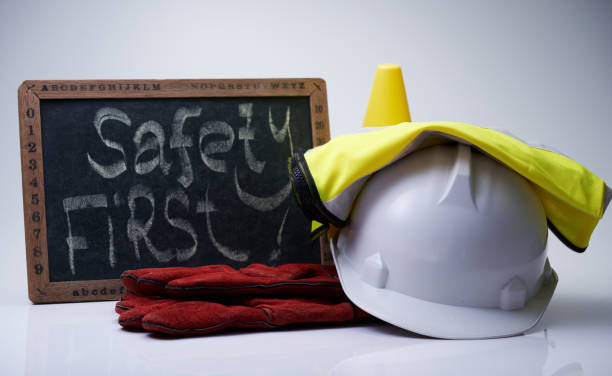The impact of weather on pools begins with temperature fluctuations. Hot temperatures encourage faster evaporation, affecting water balance. Chlorine dissipates quickly under intense sunlight, making sanitation difficult. When water levels drop, skimmers struggle to operate efficiently. Increased heat also promotes algae growth, requiring frequent chemical adjustments. Cooler temperatures slow down chemical reactions, reducing chlorine effectiveness. Freezing conditions can damage pool equipment and plumbing if proper winterization is not done. Pool owners must adjust maintenance routines to counteract seasonal changes and maintain water quality.
Pools exposed to extreme heat require additional chlorine to compensate for rapid dissipation. UV rays from the sun break down chlorine molecules, reducing their sanitizing effectiveness. This requires frequent water testing and chemical adjustments to maintain proper chlorine levels. Pools without adequate shade or covers experience higher evaporation rates, requiring more frequent refilling and rebalancing of chemicals. A significant drop in water levels can cause pump damage due to air intake. Heat waves intensify these effects, making pool maintenance a daily task.
Rain’s Effect on Pool Chemistry
Rainfall introduces contaminants that affect pool water chemistry. Heavy rain dilutes chemicals, reducing chlorine concentration and promoting algae growth. Acid rain alters pH levels, making water corrosive to pool surfaces. When rainwater mixes with organic debris, it creates an environment for bacteria and algae. Excess water may also cause overflow, leading to chemical imbalances. After a storm, testing and adjusting water chemistry become necessary. Removing debris and vacuuming the pool help maintain cleanliness. Rain also affects filtration efficiency, requiring backwashing or filter cleaning. Pool covers can reduce rainwater contamination and keep maintenance manageable.
Heavy downpours add significant amounts of untreated water to pools, reducing chemical concentration. This leads to imbalanced pH levels, requiring adjustments to stabilize the water. Rainwater often contains pollutants from the atmosphere, including dust, pollen, and chemicals, which can affect water clarity and safety. Acid rain in particular can corrode metal pool components and damage plaster finishes. If left unchecked, these changes can result in cloudy water, increased algae growth, and reduced swimmer comfort. Proper drainage systems and regular testing can help mitigate these issues.
Wind and Its Challenges for Pools
Strong winds increase the impact of weather on pools by introducing debris such as leaves and dirt. This extra debris clogs filters and strains pool circulation systems. Dust and pollen carried by wind contribute to cloudy water, requiring extra filtration. Frequent skimming and vacuuming prevent buildup that leads to water quality issues. Winds accelerate evaporation, affecting water levels and chemical stability. Pool covers minimize wind-related contamination and reduce maintenance efforts. Additionally, windy conditions can affect pool heating efficiency, making it difficult to maintain optimal water temperature.
Wind also contributes to uneven chemical distribution. Strong gusts create water surface movement, leading to inconsistent dispersion of chlorine and other sanitizers. This results in localized areas of low chlorine concentration, increasing the risk of bacterial growth. Covering pools during high winds prevents contaminants from entering and maintains chemical balance.
Another challenge posed by wind is its effect on pool structures. Persistently strong winds can damage pool covers, causing them to tear or become dislodged. Wind can also impact pool enclosures, fences, and surrounding landscaping, creating potential safety hazards. Regular maintenance of covers, skimmers, and filtration systems helps prevent wind-related damage and ensures a clean, well-functioning pool.
Seasonal Changes and Pool Upkeep
Each season affects pool maintenance differently. Spring brings pollen and organic debris, requiring frequent cleaning. Summer heat intensifies chemical evaporation and algae growth, increasing the need for sanitization. Fall introduces falling leaves and cooler temperatures, which impact filtration and chemical balance. Winter poses the greatest challenge, with freezing temperatures threatening pipes and equipment. Proper winterization, including draining water from plumbing lines, prevents costly repairs. Adjusting maintenance routines according to seasonal weather changes helps preserve pool longevity. Consulting spa cleaning professionals Victorville ensures pools remain in top condition throughout the year.
Spring introduces an influx of airborne allergens such as pollen, leading to clogged filters and murky water. Regular cleaning and filter maintenance help reduce buildup and improve water clarity. Warmer temperatures also trigger early algae growth, requiring consistent chlorination and brushing of pool surfaces.
Summer brings peak pool usage, requiring increased monitoring of chemical levels and water clarity. Sun exposure accelerates chlorine breakdown, making frequent testing essential. Pools without shade experience higher evaporation rates, necessitating regular water additions and chemical adjustments. Ensuring proper circulation prevents stagnant water and bacterial growth.
Fall presents a different set of challenges. Trees shed leaves, which can quickly accumulate in pools, clogging skimmers and filters. Without prompt removal, organic matter decomposes and affects water quality. Lower temperatures slow down chemical activity, but algae can still develop if maintenance lapses. Covering the pool during extended periods of non-use minimizes leaf accumulation and debris contamination.
Winterization is crucial for pools in cold climates. Freezing water expands, potentially damaging pool pipes and equipment. Lowering water levels, using antifreeze solutions, and covering pools prevent costly winter damage. Pools in milder climates still require maintenance to prevent algae growth and water stagnation.
Humidity and Pool Water Quality
Humidity plays a crucial role in the impact of weather on pool maintenance. High humidity levels slow down evaporation but encourage algae growth. The combination of heat and moisture accelerates bacterial development, requiring diligent sanitation. Low humidity, on the other hand, increases water loss through evaporation, affecting chemical balance. Areas with fluctuating humidity levels demand more frequent water testing and adjustments. Maintaining proper circulation helps control humidity-related issues. Pool covers assist in regulating moisture levels, reducing maintenance efforts. Ensuring adequate ventilation in indoor pools prevents excessive humidity buildup and maintains air quality.
High humidity also affects swimmers’ comfort. Excess moisture in the air can create a sticky, uncomfortable environment, particularly in enclosed pool areas. Proper ventilation helps maintain air quality and reduces condensation on pool surfaces. Algae and mold thrive in humid environments, requiring continuous monitoring and treatment to keep water clear and safe.



